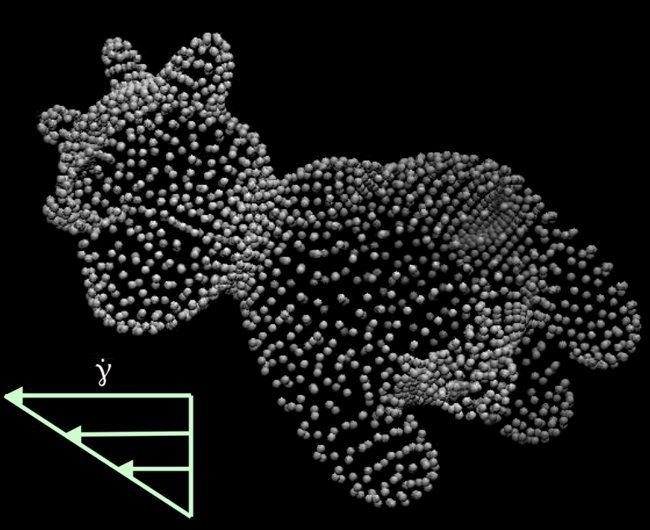PROJECT AIM
With the increasing number of non-dispatchable sustainable energy sources, electrical energy storage is crucial to maintaining a stable power grid. The recently proposed ‘semi-solid rechargeable flow battery’ offers a promising new technique for such energy storage. The aim of this PhD project is to develop a simulation model for the complex physical processes taking place in the (dis)charge cell, in particular i) the flow behavior of sticky colloidal suspensions, ii) the flow of charge between the colloidal aggregates and the walls of the cell, and iii) the interplay between both flows.
PROJECT DESCRIPTION
We have developed an efficient general method to simulate, in the Stokesian limit, the coupled translational and rotational dynamics of arbitrarily shaped colloids subject to external potential forces, linear flow fields and Brownian motion. The colloid’s surface is represented by a collection of spherical primary particles, see figure, whose hydrodynamic interactions are condensed into a single (11 × 11) grand mobility matrix for the entire colloid. Methods have been developed to determine the viscosity of a dilute solution of these colloids, both under linear shear flow and by a Green-Kubo analysis of the thermal fluctuations of the stress in a quiescent solution.

Snapshot of an arbitrarily shaped colloid tumbling in a linear shear flow (as indicated by the arrows).
2019 Dissertations
D. Palanisamy, Micro-hydrodynamics of non-spherical colloids: a Brownian Dynamics study, University of Twente, 16 May 2019.
